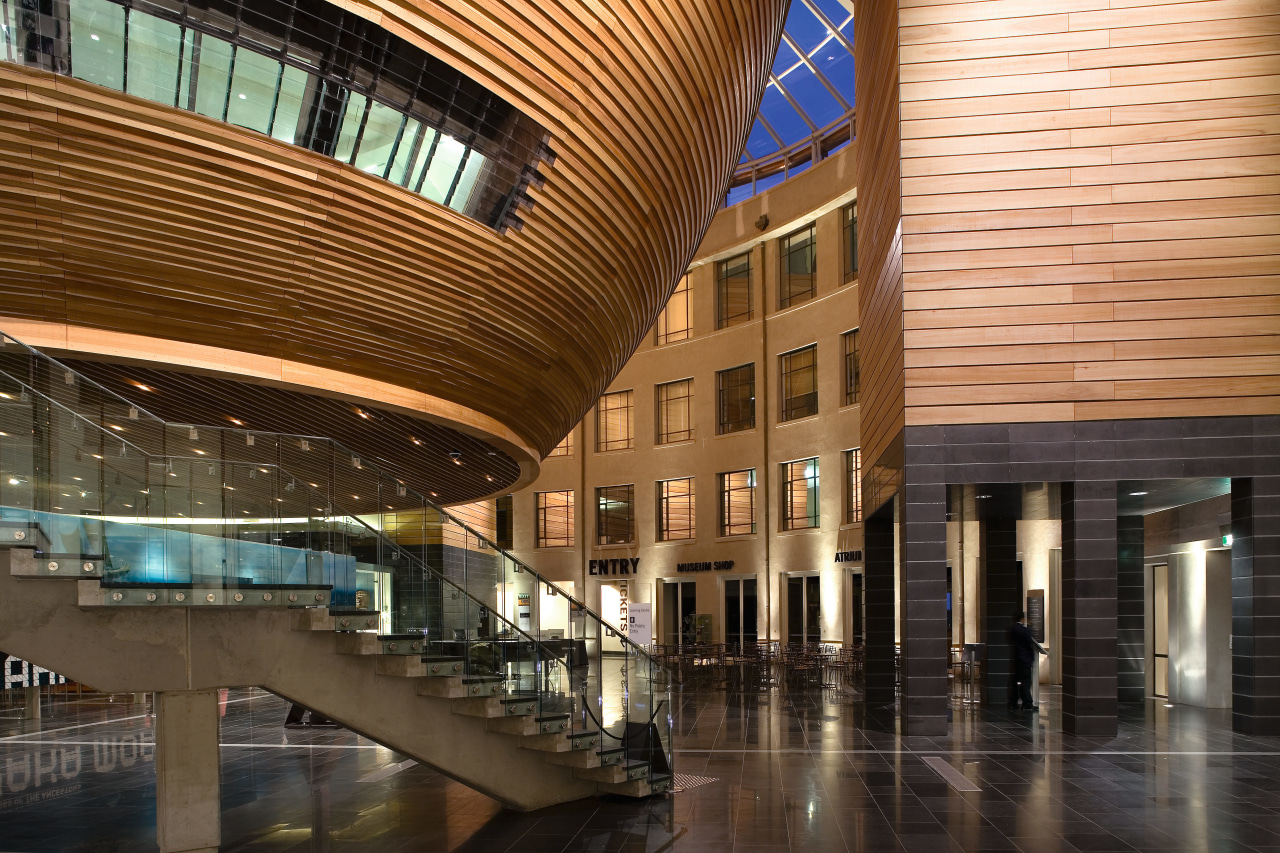Crowning glory
Space, function and culture every aspect of Noel Lane's design for Stage II of the Auckland War Memorial Museum is doing more than it appears to

WONDERMENT IS the typical response of first-time visitors to the Auckland War Memorial Museum's new Grand Atrium. The sinuous dome and suspended bowl-shaped interior structure are design and engineering feats of the highest level.
Architect Noel Lane, who was responsible for the museum's Stage I refurbishments, continues his vision for the museum with the design of the Grand Atrium. It is, he says, a logical extension of the groundwork that was completed with Stage I. However, while Stage I dealt mainly with the refurbishment of gallery space, Stage II adds a new dimension to one of Auckland's most significant buildings.
"There were three important considerations for Stage II: structural isolation, minimum floorplate and maximum usage, says Lane. "The roof is sympathetic in scale and form to the museum, but it's not part of the original structure. It sits comfortably, but doesn't weigh on the building's classical form."
Importantly, the design of the roof adds to the concept of Auckland Museum as an icon an experience enjoyed by a number of people from a number of perspectives. Aware of this responsibility, Lane spent considerable time examining the structure from every possible angle, ensuring the roof's impact would be an experience for the thousands of people who see the museum every day. The design is also a response to heritage constraints and structural necessities, including the need to conceal the lift overrides, which are hidden in three of the megaframe's legs. Another benefit of the design is a reduction in exterior walls, and therefore cost.
Like the roof, the bowl is structurally isolated, suspended from a large steel cruciform and supported by four towering legs. The bowl has been compared to many things, including a sea craft, but Lane considers it more as an artefact.
"It's a reflection of the objects it contains and the ground it stands on. However, every aspect of the design is doing more than it appears there is no frivolous decoration. The material choices and the sculptural shape are functional decorations."

Unexposed to the elements, the Fijian kauri cladding with its band-sawn finish is not designed to weather. Instead, the texture and patina, and the method of application which was influenced by the woodturning of artist John Ecuyer provide a contrast with the white plaster ceiling. As a whole, the atrium pulls spaces together.
"It's chunky, ripe and bursting at the seams. The museum is a container of information, so it was important to make the design strong, but approachable, and the light spilling into the space helps achieve this."
For further information, contact Noel Lane Architects, phone (09) 309 4800. Fax (09) 309 4801. Email: io@noel-lane-architects.co.nz.
Story by: Trendsideas
Home kitchen bathroom commercial design


